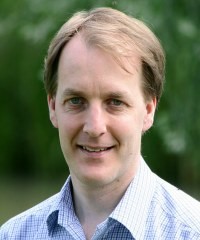时间:2014年9月24日 13:40
地点:科技创新大楼C501室
演讲学者:剑桥大学卡文迪许实验室Neil C. Greenham教授
Breaking Efficiency Limits in Solar Cells through Singlet Exciton Fission
Neil Greenham
Cavendish Laboratory, University of Cambridge
The efficiency of a conventional single-junction solar cell is limited to around 34% (the Shockley Queisser limit) since sub-bandgap photons are not absorbed, and for above-bandgap photons the energy in excess of the bandgap is lost as heat. Tandem cells combining materials of different bandgaps can break this limit, but are complex and expensive to produce. I will describe an alternative approach to high efficiencies, where absorption of high-energy photons leads to the formation of two electron-hole pairs that can be collected as additional photocurrent. To achieve this, we use the process of singlet exciton fission in organic semiconductors such as pentacene, where photogenerated singlet excitons rapidly dissociate into two triplet excitons. These triplet states diffuse to an interface with a second semiconductor where they may be dissociated into charges. Choosing PbS or PbSe nanoparticles as the second semiconductor also allows absorption and photocurrent generation from low-energy photons in the conventional manner, thus making efficient use of a wide range of photon energies. So far, device efficiencies are limited by the performance of the low-bandgap semiconductor, and by the trade-off between optical absorption and exciton diffusion in the pentacene layer. I will describe recent experiments to understand the operation of singlet fission devices, using a combination of device measurements, optical spectroscopy and magnetic resonance techniques to study the formation, transport, recombination and dissociation of triplet excitons, and to establish the materials criteria for future efficiency improvements.
Short Biography:

Neil Greenham is Professor of Physics at the Cavendish Laboratory, University of Cambridge. His research focuses on novel low-dimensional semiconductors that can be deposited from solution, in particular conjugated polymers and semiconductor nanocrystals. During his Ph.D. at Cambridge he made important early advances in the development of polymer light-emitting diodes, improving efficiencies and understanding the physics of device operation. He was a Miller Fellow at the University of California, Berkeley from 1995-96, where he developed the first solar cells based on blends of polymers with inorganic semiconductor nanocrystals. His research now focuses on photovoltaics, using device measurements, spectroscopy, advanced imaging techniques and modelling to understand and control loss mechanisms, thus improving device performance. He was awarded the Royal Society Kavli Medal and Lecture in 2013.
